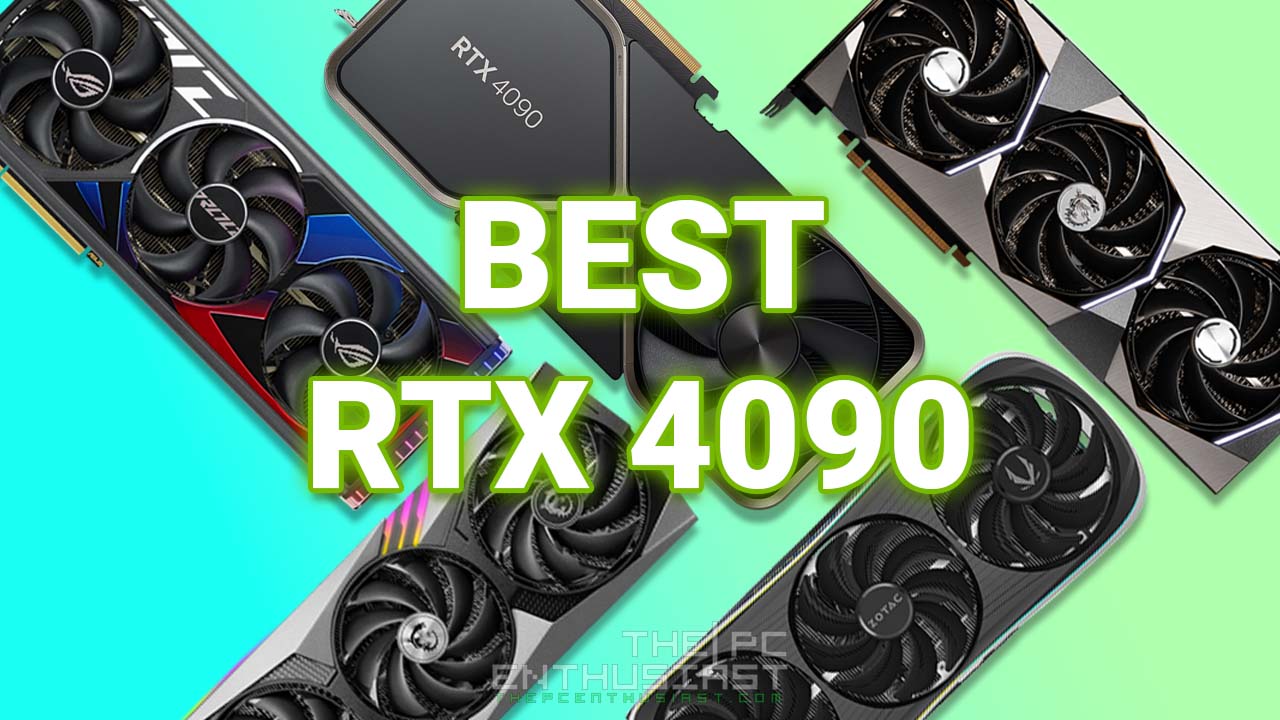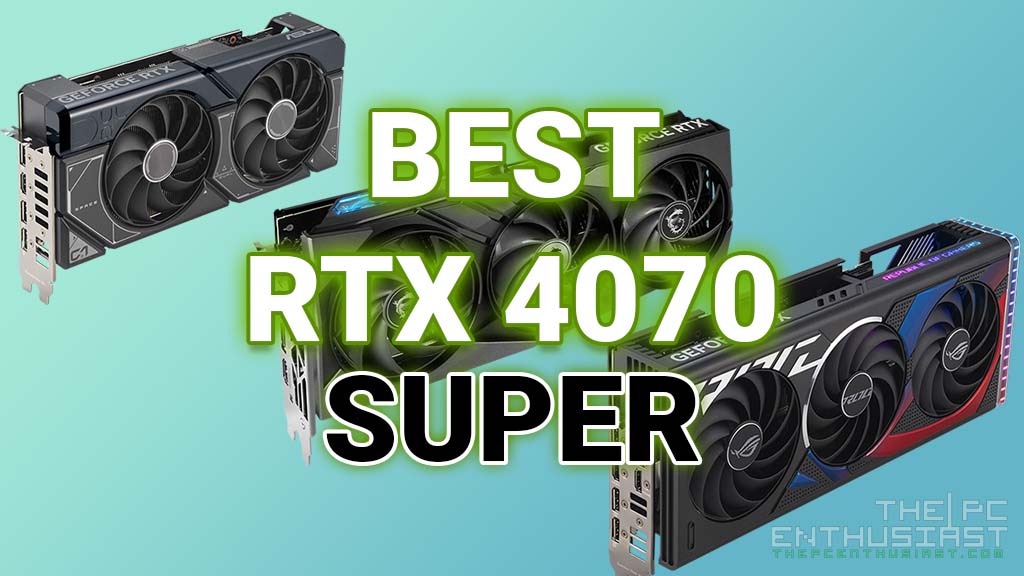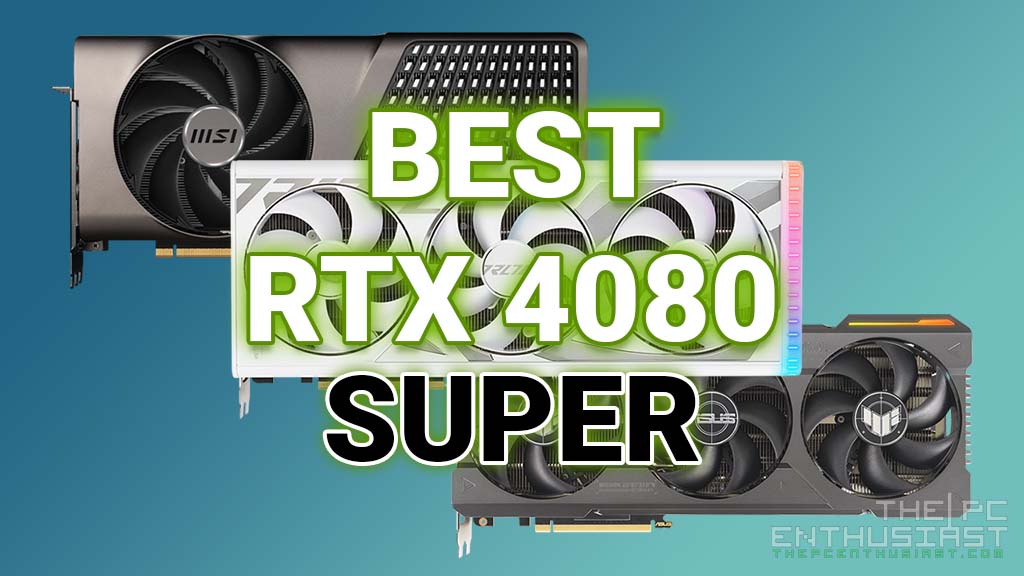NVMe SSDs or Non-Volatile Memory Express Solid State Drives are truly remarkable and state-of-the-art technology. The level of engineering that goes into these “gum stick-sized” SSDs is simply mind-blowing. In this article, I’m going to recommend some of the best NVMe SSDs available in the market. We’ll be checking out NVMe SSDs starting from budget or entry-level, up to the fastest and latest Gen4 SSDs; and including some large-capacity NVMe SSDs for those looking for more storage space. These are all excellent NVMe SSDs (in their respective class) and you simply can’t go wrong with these drives. Go ahead and check them out.
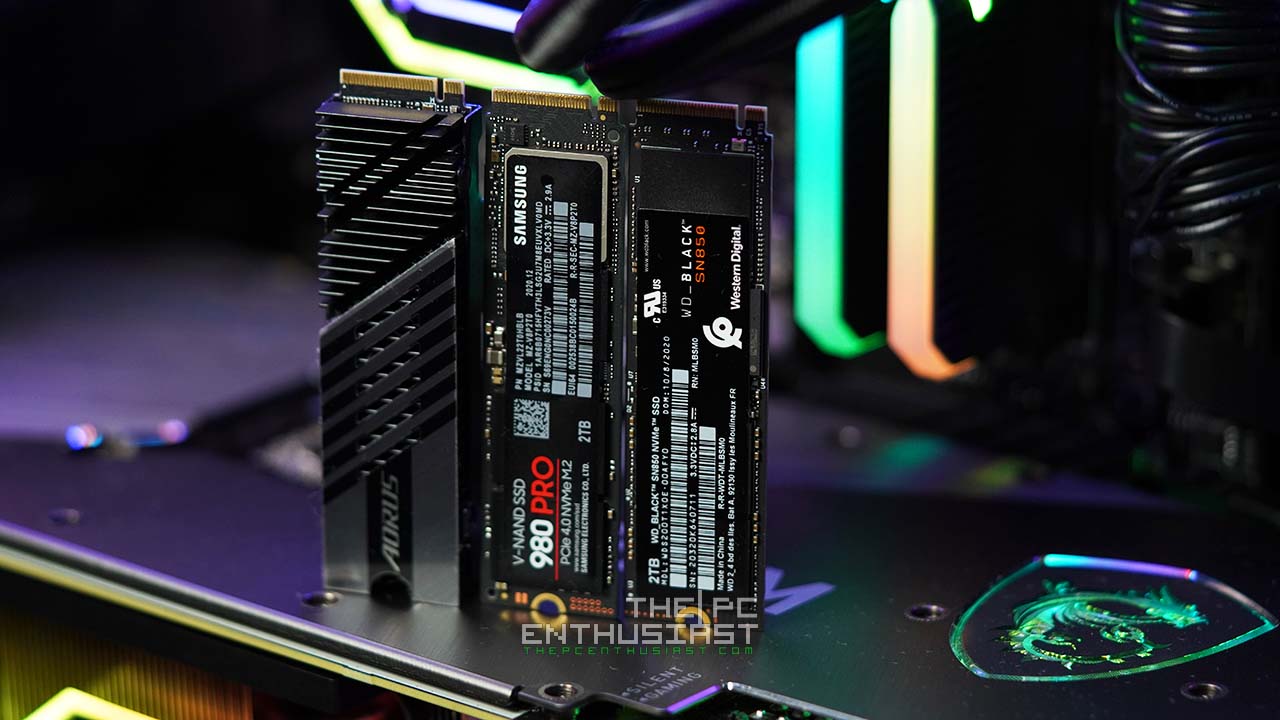
Best NVMe SSD
Best Gen4 NVMe SSDs – The Fastest In The Market
Gen4 SSDs are currently the fastest consumer NVMe SSDs in the market. They can offer speeds of up to 7,400 MB/s sequential read and up to 7,000 MB/s in sequential write. Of course, this will depend on the controller used. Most early Gen4 NVMe SSDs can only offer up to 4,000MB/s to 4,900MB/s of speeds.
While they are the fastest, Gen4 SSDs are not the most compatible type of SSDs. And by that, I mean you need a system that supports PCIe 4.0 Gen4 NVMe SSDs for these drives to function properly or for them to achieve their advertised speeds.
You’ll need at least an AMD X570 motherboard or B550 motherboard powered with at least a Ryzen 3000 (Zen 2) CPU. For Intel, you’ll need the latest Z590 motherboard powered with at least an 11th Gen Intel Core i5 CPU. Yes, it needs to be at least the Core i5 11th gen. Because the Core i3 CPUs are only refreshes of the 10th Gen Comet Lake. They are not based on the same Rocket Lake architecture as the 11th Gen Core i5, i7, and i9; and they don’t support Gen4 NVMe SSDs.
Now that’s out of the way, let’s check out the first on the list.
Sabrent Rocket 4 Plus M.2 NVMe SSD
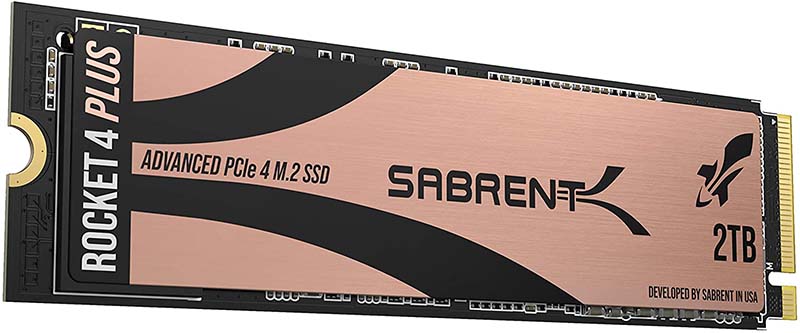
The Rocket 4 Plus is the company’s latest and fastest M.2 NVMe SSD. It features Phison’s PS5018-E18 controller paired with Micron’s 96-layer TLC NAND flash. It offers speeds of up to 7,000MB/s sequential read and up to 5,300MB/s sequential write; or up to 650,000 IOPs random read and 700,000 IOPs random write.
It’s available in three capacities – 1TB, 2TB and 4TB; with an endurance rating of 700TB, 1,400TB and 2,800TB respectively. Sabrent also offers a 5-year limited warranty for the said drives. Gen4 NVMe SSDs tend to run hot, so it’s best to put them underneath the M.2’s heatsink or heatsink if your motherboard has one.
Sabrent Rocket M.2 NVMe SSD

The Rocket 4 Plus is the company’s latest and fastest, but it’s on the expensive side. Its predecessor, the Sabrent Rocket is also a great option if you want to save a few bucks. The Rocket is powered by a Phison E16 controller paired with Kioxia 96-layer TLC NAND.
It offers speeds of up to 5,000MB/s in sequential read and up to 4,400MB/s in sequential write. It also offers 750,000 IOPS in random read and random write. Note that these speeds only apply to the 1TB and 2TB capacities. The 500GB, which I do not recommend, only offers up to 2,500MB/s of sequential write speed.
Samsung 980 PRO M.2 NVMe SSD

Samsung’s SSDs have always been (very) popular to consumers. They are usually the top choice if you want speed, reliability, and excellent software support. The Samsung 980 PRO is the company’s latest flagship M.2 NVMe SSD. It is powered by a Samsung Elpis controller paired with Samsung’s V-NAND TLC; making this product an “all-Samsung” SSD.
The 980 PRO series is available in 250GB, 500GB, 1TB, and 2TB capacities. It offers speeds of up to 7,000MB/s sequential read and up to 5,100MB/s sequential write. Note that only the 1TB and 2TB capacities offer faster speeds. The 500GB offers slightly slower read/write speeds and the 250GB offers only up to 6,400MB/s sequential read and 2,700MB/s sequential write.
Again, I don’t recommend getting the 500GB or 250GB SSD capacities. They are usually slower and they have a lower endurance rating as well. Aside from speeds, Samsung’s 980 PRO series also features hardware encryption and a 5-year warranty. Not to mention, the Samsung Magician and Migration tool are (perhaps) the best SSD tool in the industry.
You may also want to check out our Samsung 980 PRO 2TB review here.
WD Black SN850 M.2 NVMe SSD

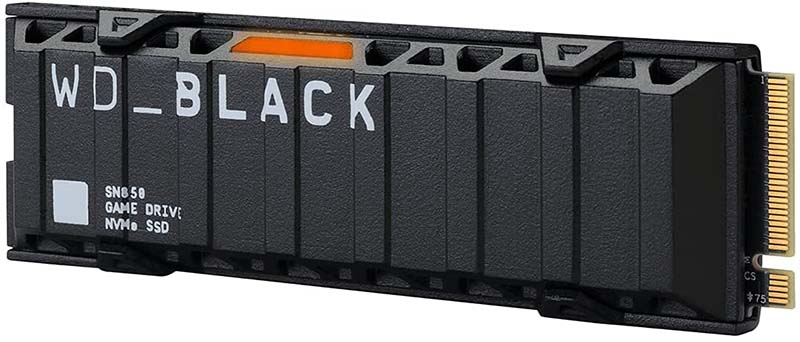
Samsung’s top competitor, WD, is no slouch at all. WD has the new WD Black SN850 to compete with the 980 Pro and other newer Gen4 NVME SSDs. It features the company’s latest WD_Black G2 controller paired with SanDisk (Toshiba) 96-layer BiCS4 TLC NAND flash. Like the Rocket 4 Plus, the SN850 is also available in 500GB, 1TB, and 2TB capacities.
All three capacities offer a speed of up to 7,000MB/s in sequential read. Only the 1TB capacity offers the fastest sequential write speed of up to 5,300MB/s; followed by the 2TB capacity with 5,100MB/s sequential write. The 500GB offers the slowest sequential and random speeds among the three capacities.
In terms of endurance, the 500GB capacity offers 300TBW and the 1TB capacity offers 600TBW. The 2TB capacity offers twice the endurance of the 1TB capacity. All three capacities are backed by a 5-year limited warranty from WD.
You may also want to check out our WD Black SN850 2TB review here.
Best Gen3 NVMe SSDs – Great Compatibility
The NVMe SSDs mentioned starting here and down are all based on the PCIe Gen3 interface. They are not as fast as the Gen4 NVMe SSDs, only around 3,000MB/s give or take, and depending on the model. But they offer better compatibility and will work with most systems that have an M.2 slot and supports NVMe SSDs.
Samsung 970 EVO Plus NVMe M.2 SSD

The Samsung 970 EVO Plus is the improved version of the 970 EVO; featuring Samsung’s Phoenix controller paired with Samsung’s V-NAND TLC. I think Samsung also improved the TurboWrite cache of the 970 EVO Plus from its predecessor; and like most of Samsung’s SSDs, this one also features hardware encryption.
I did not include the 970 PRO because it’s a much older product and it wasn’t very cost-effective (at that time). Besides, the 970 PRO is already superseded by the newer and faster 980 PRO (mentioned above).
The Samsung 980 EVO Plus offers speeds of up to 3,500MB/s in sequential read and up to 3,300MB/s in sequential write. Or around 620,000 IOPs random read and around 560,000 IOPs random write. This is for the 2TB and 1TB capacities. The 500GB and 250GB capacities have similar sequential read speed and random write. However, they have a slower sequential write speed, especially the 250GB capacity. Again, I do not recommend the lower capacity drives.
WD Black SN750 NVMe SSD


The WD Black SN750 was the company’s fastest and flagship NVMe SSD before the SN850. It offers a similar capacity size and speeds with the Samsung 970 EVO Plus, but the SN750’s write speed is slightly slower than the 970 EVO Plus. It features an in-house WD controller paired with a SanDisk 64-layer TLC NAND flash; offering speeds of up to 3,400MB/s sequential read speed and up to 3,000MB/s sequential write speed.
One advantage of the WD Black SN750 is that it has a “with heatsink” variant; unlike Samsung’s NVMe SSDs. The heatsink is useful to keep the drive’s temperature at bay and to prevent it from throttling due to heat. Not to mention, the heatsink looks great; as it was co-designed with EKWB. However, if your motherboard comes with a heatsink or heatshield for the M.2 drives, you may want to opt for the without heatsink version.
Aside from the heatsink version, the SN750 is also available in 4TB capacity. This is something Samsung is lacking in its lineup until today. Samsung doesn’t have a large capacity NVMe drives to offer.
You may also want to check out our WD Black SN750 review here.
Crucial P5 NVMe SSD

Another NVMe SSD that I think should be included in the list is the Crucial P5. It’s not the best out there, but it can compete with the other Gen3 NVMe SSDs in the market. Performance is very similar, but it can compete in terms of pricing. SSD prices tend to change so there are times that the P5 is a good deal.
The Crucial P5 features an in-house Crucial controller paired with Micron’s 96-layer TLC NAND flash. Crucial is a Micron brand so this is like an “all-Micron” or “all-Crucial” drive. The P5 offers speeds of up to 3,400MB/s sequential read and up to 3,000MB/s sequential write. It’s available in 250GB, 200GB, 1TB, and 2TB capacities and is backed by a 5-year warranty.
You may also want to check out our Crucial P5 2TB review here.
Best High Capacity NVMe SSD – If You Need More Space
Most of the drives I mentioned above are only available up to 2TB in capacities. But what if you need more, like 4TB or even 8TB capacity, below are a couple of recommended drives. Gone are the days when the 4TB and 8TB storage capacity can only be seen on hard disk drives. Nowadays, there are (NVMe) SSDs that offer up to 8TB capacity; and some enterprise-class SSDs offer higher than 8TB.
However, there are a few downsides to these large-capacity NVMe SSDs. They tend to be (very) expensive; especially the 4TB and 8TB capacities. And they usually use a QLC NAND flash, instead of TLC. QLC NAND flash has a lower endurance rating compared to TLC-based SSDs. And although these drives are still significantly faster compared to a hard disk drive; they are not as fast compared to the other NVMe SSDs mentioned above.
Sabrent Rocket Q 8TB NVMe SSD
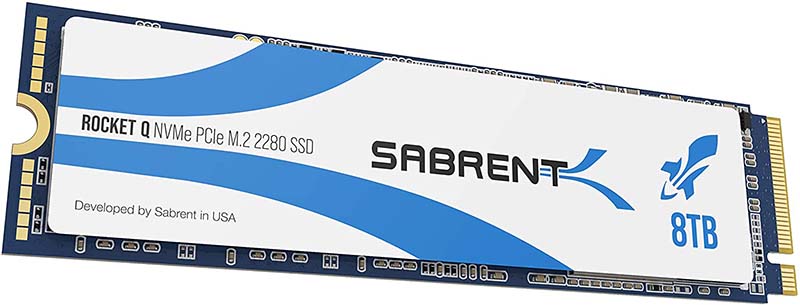
Sabrent has a wide range of SSD products, and it looks like they covered most of the market including large capacity NVMe SSDs. The Rocket Q offers 500GB to 8TB capacities. To achieve large capacity NVMe SSDs, Sabrent has to use a QLC NAND flash instead of TLC. The Rocket Q uses Micron’s 96-layer QLC NAND flash and Phison’s E12S.
It offers speeds of up to 3,300MB/s sequential read and up to 3,000MB/s sequential write. The 8TB capacity is slightly faster in sequential read speed but is 100MB/s slower in sequential write speed compared to the 2TB and 4TB capacities. Although the 1TB has a similar sequential read speed with higher capacities, its sequential write speed is only 2,00MB/s. And the 500GB is not only half the capacity of the 1TB variant but offers half the speed of the 1TB variant.
Corsair Force MP400 8TB NVMe SSD

The Corsair MP400 is also available in capacities of up to 8TB. And just like the Sabrent Rocket Q, the MP400 also uses a Phison E16 controller paired with Micron’s QLC NAND flash. Performance-wise, it offers speeds of up to 3,480MB/s in sequential read speed and up to 3,000MB/s in sequential write speed. So, its performance is more or less similar to the Rocket Q.
However, unlike the Rocket Q, the MP400 doesn’t come in 500GB capacity. Good, because the performance is poor for this kind or class of NVMe SSD. One thing to note though is that the MP400 has a slightly lower endurance rating compared to the Rocket Q. But Corsair makes up for it by offering a lower MSRP vs the Rocket Q.
Best Budget NVMe SSDs – Affordable But Good Quality
For those who are looking for a budget-friendly NVMe SSD, I can recommend three NVMe SSDs that are easy on the pocket. However, don’t expect these drives to perform as fast compared to the other drives mentioned above. All three are DRAM-less types of SSDs, so performance is not their strong point. Nevertheless, they are still faster than a SATA SSD and noticeably faster than an HDD.
Samsung 980 NVMe SSD

The Samsung 980, not to be confused with the 980 PRO, is the company’s latest NVMe SSD released in the market. They just released this drive last March 2021. It’s a DRAM-less drive and uses Samsung’s Pablo controller paired with Samsung’s 128-layer V-NAND TLC memory. It’s available in 250GB, 500GB, and 1TB capacities.
Performance-wise, it offers speeds of up to 3,500MB/s sequential read and up to 3,000MB/s sequential write; but only for the 1TB capacity. The 500GB is slower at 3,100MB/s and 2,600MB/s (sequential read/write) and the 250GB is only capable of 2,900MB/s and 1,300MB/s respectively.
Despite it being an entry-level or budget NVMe SSD, it does feature AES 256-bit hardware encryption and comes with a 5-year warranty from Samsung. It also features Intelligent TurboWrite 2.0, which is better than the 970 EVO Plus’ cache. Although, the performance suffers noticeably when the cache is exhausted.
Crucial P2 NVMe SSD

Another budget-friendly NVMe SSD I can recommend is the Crucial P2. This one is not as fast and feature-rich compared to the Samsung 980. However, it’s cheaper and offers capacities of up to 2TB. It’s also a DRAM-less NVMe SSD; and uses Phison’s E13T controller paired with Micron’s 96-later TLC NAND flash.
It offers speeds of up to 2,400MB/s sequential read and up to 1,900MB/s sequential write. As you can see, it’s slower than the Samsung 980. But it is the cheaper option between the two. Crucial also offers a 5-year warranty for the P2 series.
WD Blue SN550 NVMe SSD

Finally, for the best budget NVMe SSD, is the WD Blue SN550 NVMe SSD. The WD_Blue lineup is the company’s mainstream storage solution. It’s not the fastest, but it offers a good balance between performance and value. The WD Blacks are the high-performance or top-of-the-line storage solution. There’s also the WD Green, the cheapest and the least when it comes to performance. But there’s no “WD Green NVMe SSD” yet.
The WD Blue SN550 is also a DRAM-less NVMe SSD. It features a WD controller paired with a SanDisk 96-layer TLC NAND flash. It offers a sequential read speed of up to 2,400MB/s, but only the higher capacities are capable of up to 1,750MB/s sequential write speed. The 250GB is about 45% slower compared to the other variants.
It’s not as fast compared to the Crucial P2, but the SN550 is cheaper; especially the 2TB variant. So, if you are not all about speed and you want to save some more cash, the SN550 would be your best option.
You may also want to check out our WD Blue SN550 review here.
There you have it! I hope this article helped you decide to choose the best NVMe SSD for your work system or gaming PC.



